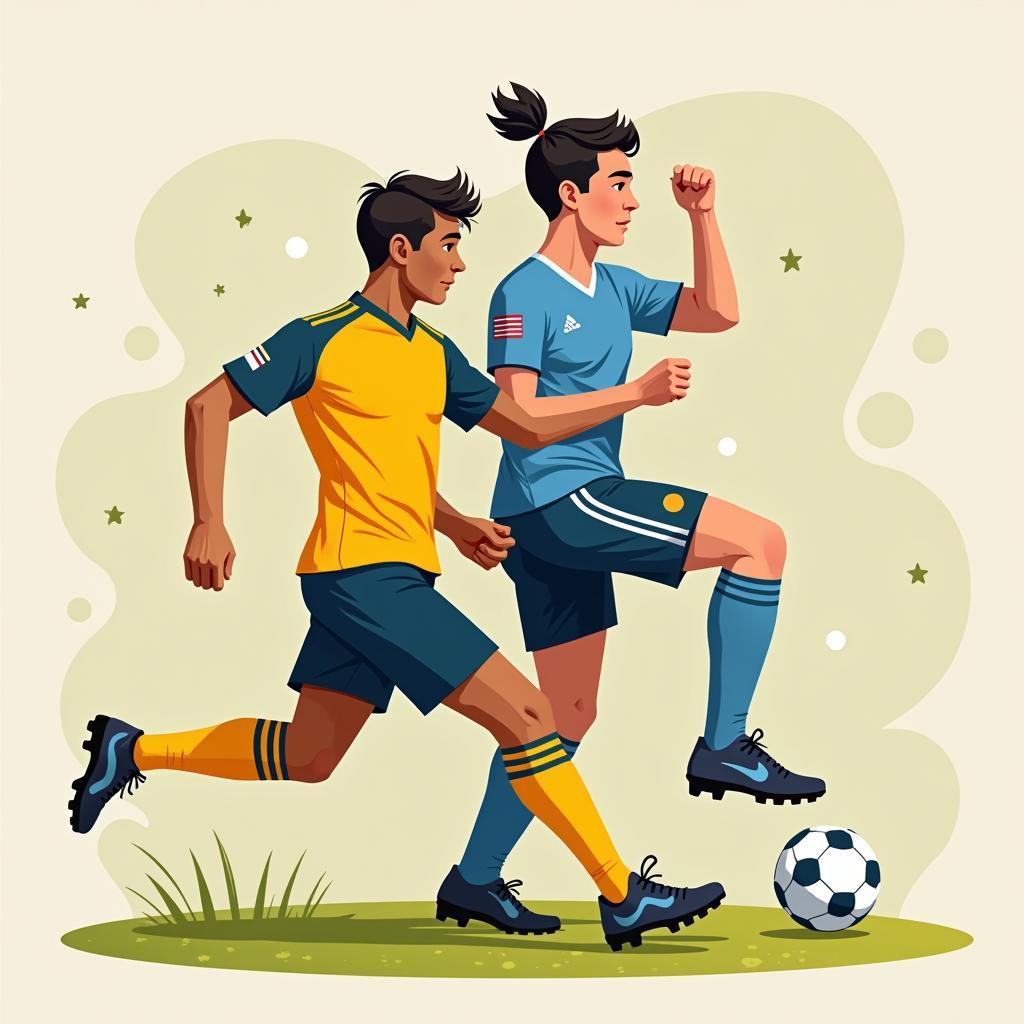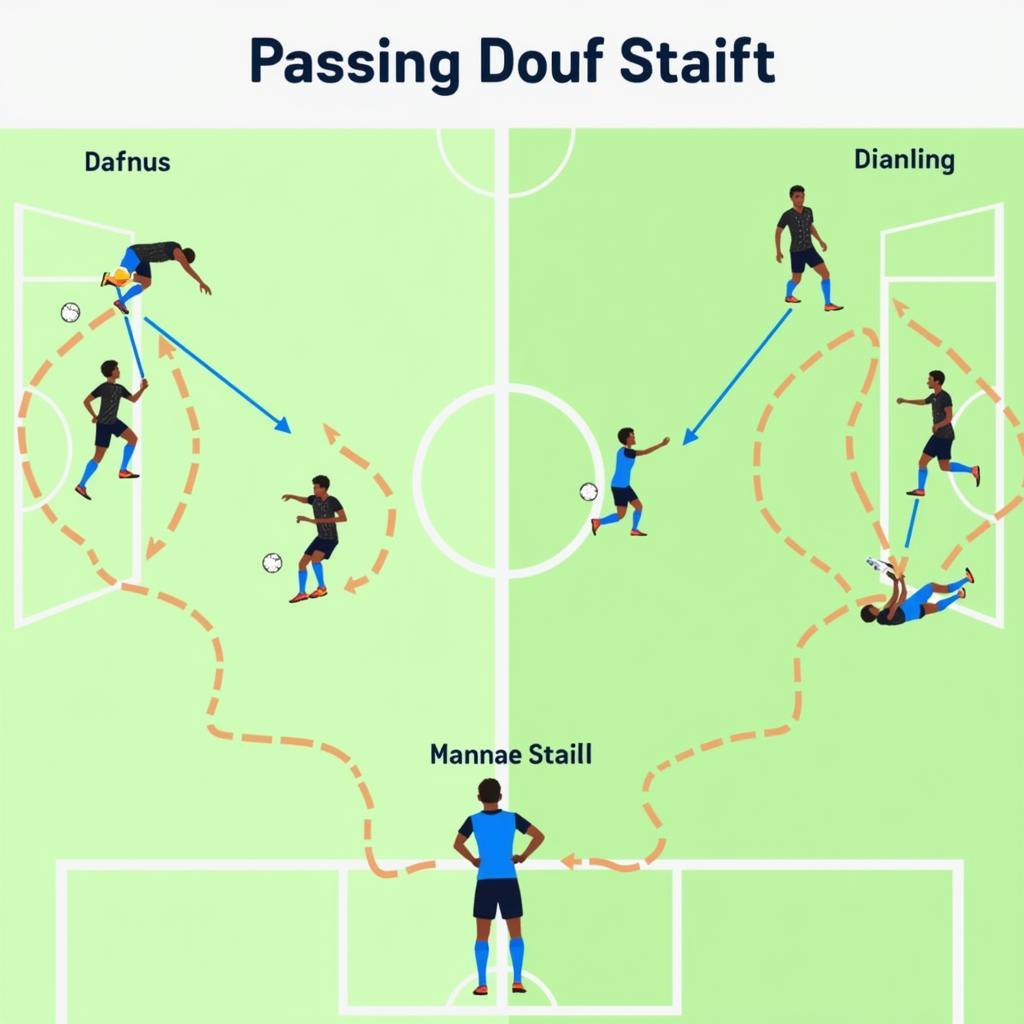Doufleur Player: Understanding the Two-Sided Role in Football
January 14, 2025The term “doufleur player” isn’t a widely recognized term in the football world. It seems to be a combination of “double” and “fleur,” perhaps hinting at a player with two distinct roles or a dual nature on the field. This article explores what a “doufleur player” could represent, analyzing potential interpretations and drawing parallels with existing player roles in modern football.
Decoding the “Doufleur Player”: A Multifaceted Role
What exactly is a “doufleur player”? While not a standard term, the concept intrigues. It suggests a player capable of excelling in two complementary or contrasting roles. This could involve a player who seamlessly transitions between attacking and defending, or one who combines physical prowess with technical finesse.  Doufleur Player Transitioning Between Attack and Defend
Doufleur Player Transitioning Between Attack and Defend
The Hybrid Midfielder: A Modern Doufleur
One potential embodiment of the “doufleur player” is the modern box-to-box midfielder. These players contribute significantly to both defensive and attacking phases of the game. They break up opposition attacks, win back possession, and then initiate their team’s forward movement, often culminating in assists or goals. Think of players like Kevin De Bruyne or N’Golo Kanté, although with different strengths, both exemplify this dual role.
The Two-Footed Winger: Versatility in Attack
Another interpretation could be a winger equally adept at using both feet. This versatility makes them unpredictable and dangerous, able to cut inside or cross with equal effectiveness from either flank. This two-sided ability opens up more attacking options and makes it harder for defenders to anticipate their moves.
The “Doufleur” Advantage: A Tactical Asset
The “doufleur player,” in any of its potential interpretations, offers a significant tactical advantage. This versatility disrupts the opposition’s strategy and creates uncertainty. It allows for greater fluidity and adaptability within a team’s formation, making them harder to predict and counter.
Adapting to Different Formations: The Flexible Doufleur
The “doufleur player” can thrive in various formations. Their adaptability allows managers to switch systems without compromising effectiveness. For example, a hybrid midfielder can operate effectively in a 4-3-3, a 4-2-3-1, or even a 3-5-2, adjusting their role to the specific demands of each system.
Identifying and Developing “Doufleur” Players
While the term “doufleur player” may not be common parlance, the concept of a player with dual capabilities is highly valued in modern football. Scouts and coaches actively seek players with these attributes, recognizing their potential to become game-changers. Developing these two-sided skills requires targeted training focusing on both technical proficiency and tactical awareness.  Doufleur Player Training Drills
Doufleur Player Training Drills
In conclusion, the “doufleur player,” although not a formally recognized term, represents a valuable asset in modern football. Whether a hybrid midfielder, a two-footed winger, or any other player with dual capabilities, this versatility offers a tactical advantage and can be a key factor in a team’s success. This adaptable player can elevate a team’s performance and is a sought-after asset in today’s dynamic game.
FAQ
-
What is a “doufleur player”? It refers to a player with dual capabilities, excelling in two complementary or contrasting roles on the field.
-
Are there any real-world examples of “doufleur players”? Yes, players like Kevin De Bruyne and N’Golo Kanté, while possessing different strengths, exemplify the dual role of a box-to-box midfielder, a potential interpretation of the “doufleur player.”
-
How does a “doufleur player” benefit a team? Their versatility disrupts opposition strategy, creates uncertainty, and allows for greater tactical flexibility.
For any further assistance, please contact us at Phone Number: 0396443476, Email: [email protected], or visit our office at 23 Tháng 3, Đắk Nia, Gia Nghĩa, Đắk Nông, Việt Nam. We have a 24/7 customer support team.